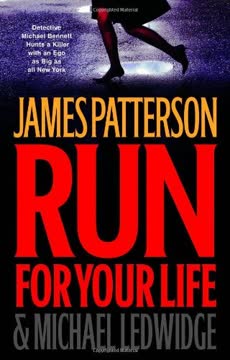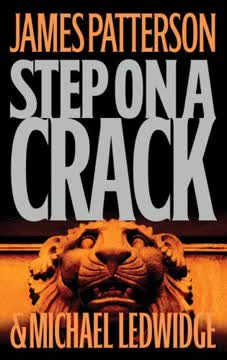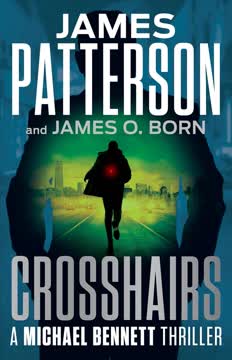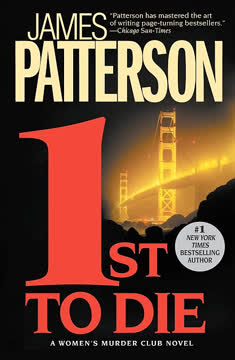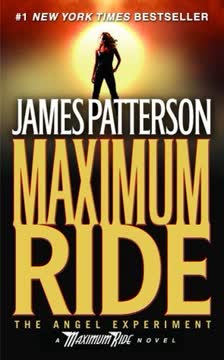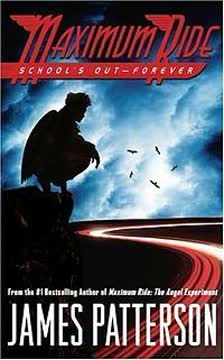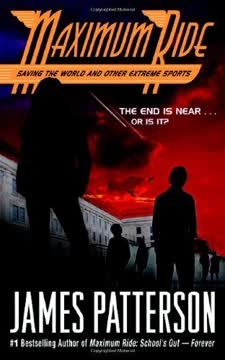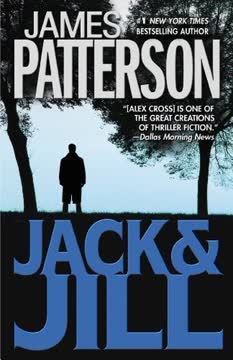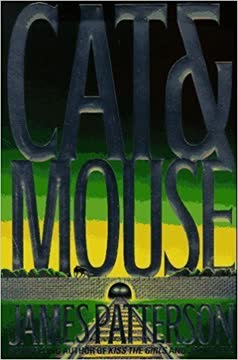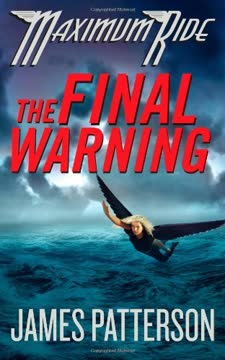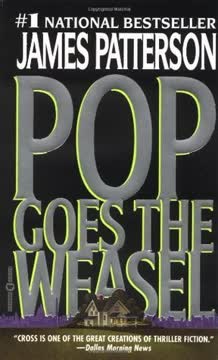Plot Summary
Hostage Negotiation Chaos
Detective Michael Bennett is thrust into a high-stakes negotiation with a young gang hitman, D-Ray, who has taken his own family hostage. As Bennett tries to calm the situation, he faces the pressure of saving lives while dealing with the chaos of a police barricade and the threat of violence. Despite his best efforts, the situation spirals out of control, leading to a tragic conclusion that leaves Bennett questioning his role and the effectiveness of his actions.
The Teacher's Mission
A mysterious figure known as "The Teacher" begins a calculated killing spree across New York City, targeting those he deems morally corrupt. With a twisted sense of justice, he leaves a trail of bodies and cryptic messages, challenging the police to understand his motives. As the city reels from the violence, Bennett is drawn into the investigation, tasked with stopping the killer before more lives are lost.
Family Flu Epidemic
Amidst the chaos of the investigation, Bennett's home life is thrown into disarray as his children fall victim to a severe flu outbreak. Struggling to balance his responsibilities as a father and a detective, Bennett relies on the support of his Irish nanny, Mary Catherine, to keep his family afloat. The domestic turmoil adds another layer of stress to Bennett's already overwhelming life.
A Killer's Pattern
As Bennett delves deeper into the case, he begins to see a pattern in The Teacher's choice of victims. Each murder seems to be a calculated act of vengeance against those who have wronged him. With the help of his team, Bennett pieces together the killer's past and motivations, bringing him closer to understanding the mind of a man who sees himself as a vigilante.
The Hunt Intensifies
With the city on edge and the media scrutinizing every move, Bennett and his team intensify their efforts to capture The Teacher. As they close in on the killer's identity, they face mounting pressure from the public and their superiors. The investigation takes a personal turn for Bennett, as he realizes the killer's next target may be closer to home than he thought.
A Deadly Encounter
The investigation culminates in a tense showdown between Bennett and The Teacher. As the killer's plan reaches its climax, Bennett must use all his skills to outwit a man who is always one step ahead. The encounter tests Bennett's resolve and forces him to confront his own beliefs about justice and morality.
The Final Confrontation
In a dramatic climax, Bennett faces The Teacher in a final confrontation that will determine the fate of the city. With lives hanging in the balance, Bennett must make a split-second decision that will have lasting consequences. The resolution of the case brings both relief and reflection, as Bennett grapples with the impact of his actions.
Healing and Reflection
In the aftermath of the investigation, Bennett takes time to heal and reflect on the events that have unfolded. He finds solace in his family and the support of his colleagues, as he comes to terms with the challenges he has faced. The experience leaves him with a renewed sense of purpose and a deeper understanding of the complexities of justice.
Characters
Michael Bennett
Bennett is a seasoned NYPD detective known for his negotiation skills and dedication to justice. Balancing his demanding job with raising ten adopted children, he faces immense pressure both at work and at home. Throughout the story, Bennett's resilience and compassion are tested as he confronts a ruthless killer and navigates personal challenges.
The Teacher
The Teacher is a calculated and intelligent killer who believes he is delivering justice to those he deems morally corrupt. His meticulous planning and cryptic messages challenge the police, as he seeks to make a statement through his violent acts. The Teacher's complex psyche and motivations drive the narrative, as he becomes the central antagonist in Bennett's investigation.
Mary Catherine
Mary Catherine is the Irish nanny who helps Bennett manage his large family. Her unwavering support and practical approach provide stability in the chaotic Bennett household. As a confidante and ally, she plays a crucial role in helping Bennett balance his personal and professional responsibilities.
Seamus Bennett
Seamus is Bennett's grandfather, a retired priest who offers guidance and humor to the family. His presence provides a sense of continuity and tradition, as he helps Bennett navigate the challenges of fatherhood and the investigation.
D-Ray
D-Ray is a nineteen-year-old gang member who becomes the focus of a tense hostage situation. His actions set the stage for the story's opening, highlighting the complexities of crime and desperation in the city. D-Ray's character serves as a catalyst for Bennett's involvement in the unfolding events.
Erica Gladstone
Erica is the estranged wife of The Teacher's brother, whose life becomes entangled in the killer's vendetta. Her tragic fate underscores the collateral damage of The Teacher's mission, as her story unfolds through the investigation.
Thomas Gladstone
Thomas is the brother of The Teacher, whose personal struggles and ultimate demise serve as the catalyst for the killing spree. His character provides insight into the family dynamics and motivations that drive The Teacher's actions.
Beth Peters
Beth is a fellow detective who works alongside Bennett in the investigation. Her sharp instincts and dedication to the case make her a valuable ally, as she helps piece together the clues that lead to The Teacher's identity.
Plot Devices
Dual Narrative Structure
The book employs a dual narrative structure, alternating between Bennett's professional and personal life. This approach highlights the challenges of balancing work and family, as Bennett navigates the demands of a high-stakes investigation while caring for his children.
The Teacher's Manifesto
The Teacher's manifesto serves as a central plot device, providing insight into his motivations and worldview. The manifesto's cryptic messages and philosophical musings challenge the police and add depth to the killer's character, driving the narrative forward.
Hostage Negotiation
The book opens with a tense hostage negotiation, setting the stage for the high-stakes drama that follows. This plot device establishes Bennett's skills and the chaotic environment in which he operates, drawing readers into the story from the outset.
Family Dynamics
The portrayal of Bennett's family life adds emotional depth to the narrative, highlighting the personal challenges he faces. The dynamics within the Bennett household provide a counterpoint to the investigation, enriching the story with themes of love, resilience, and support.
Analysis
"Run for Your Life" delves into complex themes of justice, morality, and the consequences of one's actions. Through the character of The Teacher, the book examines the fine line between right and wrong, and the dangers of taking the law into one's own hands. Bennett's journey reflects the challenges of upholding justice in a world where the lines are often blurred. The narrative also emphasizes the importance of family and support systems, as Bennett navigates the pressures of his dual roles. Ultimately, the book offers a thought-provoking exploration of the human condition, wrapped in a gripping and suspenseful thriller.
Last updated:
FAQ
Synopsis & Basic Details
What is Run for Your Life about?
- Detective Michael Bennett's Dual Life: The story follows NYPD Detective Michael Bennett, a dedicated homicide negotiator and a widowed father of ten adopted children, as he navigates the intense demands of his professional and personal lives. He grapples with the aftermath of a tragic hostage situation and the overwhelming chaos of a flu epidemic sweeping through his large, multicultural family.
- The Rise of "The Teacher": A mysterious and highly intelligent serial killer, known only as "The Teacher," begins a calculated and public killing spree across New York City. This antagonist targets individuals he deems morally corrupt or obnoxious, leaving cryptic messages and using various disguises and weapons, challenging the police to understand his twisted sense of justice.
- A City Under Siege: As The Teacher's body count rises and his methods become more audacious, the city descends into fear and paranoia. Bennett is thrust into the lead of a high-stakes investigation, racing against time to uncover the killer's identity and motives, all while struggling to keep his own family safe and his personal life from unraveling.
Why should I read Run for Your Life?
- Gripping, Fast-Paced Thriller: James Patterson's signature short chapters and relentless pacing create an addictive reading experience, making it nearly impossible to put down. The narrative constantly builds tension, keeping readers on the edge of their seats as Bennett closes in on a cunning and unpredictable killer.
- Deeply Human Protagonist: Beyond the thrilling plot, the novel offers a poignant exploration of Detective Michael Bennett's character. His struggles as a single father to ten adopted children, his grief over his late wife Maeve, and his unwavering moral compass provide a rich emotional core that resonates deeply, making him one of fiction's most relatable heroes.
- Thought-Provoking Social Commentary: The story subtly critiques modern society's obsession with wealth, superficiality, and entitlement through the lens of "The Teacher's" twisted mission. It also explores themes of justice, vigilantism, and the media's role in shaping public perception, offering more than just a simple cat-and-mouse chase.
What is the background of Run for Your Life?
- Post-9/11 NYC Paranoia: The novel is set in a New York City still deeply affected by the trauma of 9/11, influencing police tactics (e.g., Counter-Terror Unit's "surge tactic" in Chapter 15) and public anxiety. The fear of terrorism is a recurring undercurrent, which The Teacher subtly exploits to his advantage.
- Critique of Urban Entitlement: The story provides a cultural commentary on the perceived moral decay and superficiality of the city's elite. The Teacher's targets—a luxury store clerk, a maître d' at an exclusive club, a flight attendant, a fashion photographer, and a divorce lawyer—are all connected to high-end, often ostentatious, lifestyles, reflecting a societal divide.
- Media's Double-Edged Sword: The narrative highlights the pervasive and often problematic role of the media, particularly the New York Times reporter Cathy Calvin. Her aggressive pursuit of a story, including publishing The Teacher's manifesto (Chapter 41), inadvertently aids the killer and complicates the police investigation, showcasing the tension between public information and public safety.
What are the most memorable quotes in Run for Your Life?
- "The penalty for obnoxiousness is now death.": This chilling line from The Teacher's manifesto (Chapter 41) encapsulates his twisted ideology and serves as the core statement of his mission. It defines his self-appointed role as a moral arbiter and reveals the extreme, disproportionate "justice" he seeks to impose on those he deems disrespectful or entitled.
- "I don't know how much longer I can live without you, Maeve.": Michael Bennett's internal lament (Chapter 1) powerfully conveys his profound grief and the immense void left by his late wife. This quote underscores his vulnerability and the constant emotional battle he faces, making his resilience in the face of professional and personal chaos all the more impactful.
- "You only live once, Michael. You only live just once.": Uttered by The Teacher (Chapter 72) with a "winningest smile," this seemingly innocuous phrase takes on a sinister double meaning. It reflects his nihilistic view of life, justifying his murderous spree as a singular, unrepeatable act of "purpose," while also serving as a chilling taunt to Bennett about the preciousness of life he is fighting to protect.
What writing style, narrative choices, and literary techniques does James Patterson use?
- Rapid-Fire, Short Chapters: Patterson employs his signature style of extremely short, punchy chapters, often ending with cliffhangers or dramatic revelations. This technique creates a relentless, high-octane pace that propels the reader forward, mirroring the urgency and chaos of Bennett's investigation and personal life.
- Alternating Perspectives & Internal Monologue: The narrative frequently shifts between Michael Bennett's first-person perspective and The Teacher's third-person (or sometimes internal) viewpoint, offering intimate access to both protagonist and antagonist. This dual narrative structure deepens character understanding and builds suspense, allowing readers to witness the killer's twisted logic firsthand while experiencing Bennett's emotional toll.
- Juxtaposition of Domesticity and Danger: A key literary technique is the stark contrast between Bennett's chaotic but loving home life and the brutal, high-stakes world of his police work. This juxtaposition highlights the emotional weight of his dual responsibilities, emphasizing themes of family, sacrifice, and the constant struggle to maintain normalcy amidst extraordinary circumstances.
Hidden Details & Subtle Connections
What are some minor details that add significant meaning?
- D-Ray's "Eracism" Magnet: In the prologue (Chapter 1), Bennett notices an "Eracism" magnet on D-Ray's fridge. This seemingly throwaway detail subtly highlights the complex racial and social tensions underlying the hostage situation, suggesting D-Ray's environment was steeped in discussions of social justice, even as he committed violent acts, adding a layer of tragic irony to his eventual death.
- The Teacher's Rolex Exchange: When The Teacher encounters the young Marine (Chapter 30), he exchanges his real Rolex for a fake, then gives the real one to the soldier. This act, while seemingly generous, is a subtle commentary on his disdain for superficial wealth and his twisted sense of "rewarding" perceived virtue (patriotism), contrasting with his usual targets and revealing a complex, albeit warped, moral code.
- Camille Underhill's Snobbery: Bennett's neighbor, Camille Underhill, initially dismisses him (Chapter 27) but previously sought his help for a prowler. This interaction subtly underscores the pervasive class distinctions in Bennett's building and the city, while also highlighting the universal human need for security, regardless of social standing, which The Teacher's actions ultimately disrupt for everyone.
What are some subtle foreshadowing and callbacks?
- Bennett's CRU Background: Commissioner Daly's insistence on Bennett leading the task force (Chapter 12) explicitly references his past work with the Catastrophic Response Unit (CRU). This foreshadows the large-scale, city-wide nature of The Teacher's threat, indicating that this is no ordinary serial killer case but a disaster requiring specialized, broad-scope expertise.
- The Teacher's Anger Management: In Chapter 4, The Teacher recalls anger management therapy, using techniques like "squeeze your oranges." This detail subtly foreshadows his highly controlled, calculated violence, revealing that his rage is not impulsive but a carefully managed force, making him a more dangerous and methodical antagonist.
- Maeve's Poem Echoes: The Edna St. Vincent Millay poem quoted by Bennett in Chapter 1, "Gently they go, the beautiful, the tender the kind... I know. But I do not approve. And I am not resigned," subtly foreshadows his ongoing struggle with grief and his refusal to accept loss. This theme is powerfully echoed in the Epilogue (Chapter 97) when Jane reads a poem about a mother's enduring presence, suggesting Bennett's eventual path to acceptance and finding Maeve's spirit in his children.
What are some unexpected character connections?
- The Teacher's True Identity as Billy Meyer: The revelation that "The Teacher" is actually William Meyer, Thomas Gladstone's brother (Chapter 84), is the central twist. This connection completely recontextualizes the entire killing spree, shifting it from random acts of "justice" to a deeply personal, revenge-driven mission to avenge his brother's suicide, a detail not immediately apparent from the initial "Teacher" persona.
- Cathy Calvin as The Teacher's Confidante: The New York Times reporter Cathy Calvin's secret communication with The Teacher (Chapter 40) is an unexpected and ethically dubious connection. This detail highlights the killer's manipulative nature, using the media to amplify his message and sow confusion, while also exposing the press's vulnerability to being exploited for sensationalism.
- Petie the Doorman's Insight: Petie, the doorman at the Blanchettes' building, provides crucial, intimate details about Erica Gladstone's family history (Chapter 64), including her parents' disapproval of her marriage to Gladstone and her past struggles. This seemingly minor character offers a window into the deep-seated class conflicts and family secrets that fueled The Teacher's vendetta, revealing the hidden social dynamics of the elite.
Who are the most significant supporting characters?
- Mary Catherine, the Steadfast Nanny: Mary Catherine transcends the typical "nanny" role, acting as Michael Bennett's indispensable emotional anchor and practical co-parent. Her unwavering loyalty, resourcefulness in managing the flu-ridden household (Chapter 18, 26), and quiet strength provide the stability Bennett desperately needs, allowing him to focus on his demanding job.
- Seamus Bennett, the Moral Compass: Michael's grandfather, Father Seamus, offers more than just comic relief; he represents a traditional moral authority and a grounding force for the family. His unexpected confrontation with Eddie (Chapter 75) and his eventual support for Michael (Chapter 97) highlight his role as a wise, albeit crotchety, figure who embodies enduring values amidst modern chaos.
- Beth Peters, the Competent Ally: Detective Beth Peters emerges as a sharp, sardonic, and highly capable partner for Bennett. Her professional competence, quick thinking, and ability to connect disparate clues (Chapter 16, 71) make her an invaluable asset to the investigation, providing a crucial professional counterbalance to Bennett's personal struggles and the department's political pressures.
Psychological, Emotional, & Relational Analysis
What are some unspoken motivations of the characters?
- Bennett's Guilt-Driven Dedication: Michael Bennett's relentless pursuit of justice and his deep commitment to his children are subtly fueled by unspoken guilt over his wife Maeve's death. His internal monologues (Chapter 1, 7) reveal a profound sense of responsibility and a desperate need to "do something right" to compensate for his perceived helplessness during Maeve's illness, driving him to protect others at all costs.
- The Teacher's Deep-Seated Resentment: Beyond avenging his brother, Billy Meyer's "mission" is driven by a profound, unspoken class resentment and a sense of personal abandonment. His childhood trauma of being "kidnapped" by his wealthy stepfather (Chapter 38) and forced into a life of luxury he despised, festered into a desire to punish the "obnoxious" elite, projecting his own feelings of worthlessness onto them.
- Mrs. Blanchette's Denial as Self-Preservation: Cynthia Blanchette's seemingly callous denial of her daughter's murder and her insistence on proceeding with the charity event (Chapter 68) is an unspoken, extreme psychological defense mechanism. Her "very hard time dealing with stress" (Chapter 69) and reliance on alcohol and pills suggest a deep-seated inability to confront painful realities, using social obligations as a shield against overwhelming grief and guilt.
What psychological complexities do the characters exhibit?
- The Teacher's Narcissistic Grandiosity: Billy Meyer exhibits classic traits of narcissistic grandiosity, believing himself to be a "new man" (Chapter 4) and an "avenging dispenser of justice" (Chapter 45). His meticulous planning, use of disguises, and self-justifying manifesto reveal a highly inflated sense of self-importance and a complete lack of empathy, viewing his victims as "worthless animals" (Chapter 44) rather than human beings.
- Bennett's Exhaustion and Vulnerability: Michael Bennett's psychological complexity lies in his profound exhaustion and vulnerability, constantly battling grief, stress, and the demands of his large family (Chapter 7, 25). His moments of near-collapse, self-doubt, and longing for Maeve (Chapter 1, 46) reveal a deeply human struggle beneath his tough cop exterior, making his resilience a testament to his inner strength rather than a lack of feeling.
- D-Ray's Stockholm Syndrome: The hostage D-Ray's family, particularly Miss Carol, exhibits a form of Stockholm Syndrome (Prologue, Chapter 3) by protecting him from the police. This psychological complexity highlights the powerful, often irrational, bonds that can form under extreme duress, where victims identify with their captor, blurring the lines between good and evil in a desperate bid for survival or perceived loyalty.
What are the major emotional turning points?
- D-Ray's Tragic Death: The unexpected shooting of D-Ray by an unknown sniper (Chapter 3) is a major emotional turning point for Bennett. It shatters his belief in his ability to control situations non-violently and leaves him with a profound sense of failure and helplessness, fueling his determination to prevent future tragedies and understand the true nature of evil.
- Discovery of the Gladstone Family Murders: The horrific scene at the Gladstone mansion (Chapter 56), where Bennett finds Erica and her daughters brutally murdered, marks a critical emotional shift. This act of extreme depravity by The Teacher personalizes the hunt for Bennett, transforming it from a professional duty into a visceral, rage-fueled quest for retribution against a truly monstrous individual.
- Meyer's Confession and Chrissy's Abduction: Billy Meyer's detailed confession of his motives (Chapter 85) and his subsequent abduction of Chrissy (Chapter 86) is a pivotal emotional turning point. It reveals the deeply personal nature of the killer's vendetta and directly threatens Bennett's most cherished possession, pushing him to the absolute limits of his emotional and physical endurance, forcing him to confront his deepest fears.
How do relationship dynamics evolve?
- Bennett and Mary Catherine's Deepening Bond: The relationship between Michael Bennett and Mary Catherine evolves from a professional arrangement to one of profound mutual reliance and unspoken affection. Her unwavering support, practical competence, and emotional understanding (Chapter 21, 47) become indispensable, highlighting a growing, almost familial, intimacy that transcends their employer-employee roles.
- Bennett's Reconnection with His Children: Initially overwhelmed and struggling with his children's needs (Chapter 1, 7), Bennett's relationship with his kids transforms through the crisis. Moments like Fiona's joy over the "Tooth Fairy" (Chapter 21) and the children's collective effort to care for him (Chapter 67) show his gradual reconnection and renewed appreciation for their love, helping him heal from Maeve's loss.
- Bennett's Shifting Stance with NYPD Hierarchy: Bennett's relationship with Commissioner Daly and Chief McGinnis evolves from initial friction and distrust (Chapter 28) to a grudging respect and reliance. Despite their political maneuvering and criticism, they ultimately recognize Bennett's unique skills and leadership, entrusting him with the critical task of stopping The Teacher, demonstrating the complex power dynamics within the police force.
Interpretation & Debate
Which parts of the story remain ambiguous or open-ended?
- The Full Scope of The Teacher's "Plan": While Meyer reveals his specific targets were from his brother's list (Chapter 85), the full extent of his original "Plan" (Chapter 9) and whether he had other, broader societal targets beyond those directly connected to his brother's suicide remains ambiguous. His manifesto's general condemnation of "obnoxiousness" suggests a larger, unfulfilled agenda.
- The Nature of Maeve's "Appearance": In his near-death experience in the bay (Chapter 96), Bennett sees a "pale luminous form" of Maeve, which he interprets as his "guardian angel." The narrative leaves it open to interpretation whether this was a genuine spiritual encounter, a hallucination induced by trauma and oxygen deprivation, or a symbolic representation of his internal healing and acceptance of her enduring presence.
- Long-Term Impact on Bennett's Children: The Epilogue (Chapter 97) shows the children "moving on" and displaying resilience, but the long-term psychological impact of their mother's death, the flu epidemic, and Chrissy's abduction by a serial killer remains open-ended. The story suggests their strength, but the scars of such profound trauma are complex and not easily erased, inviting readers to ponder their future coping mechanisms.
What are some debatable, controversial scenes or moments in Run for Your Life?
- D-Ray's Family Protecting Him: The scene where D-Ray's family forms a "human shield" to protect him (Chapter 3) is highly debatable. While Bennett attributes it to "Stockholm syndrome," it could also be interpreted as a desperate act of familial loyalty within a marginalized community, highlighting the complex and often contradictory allegiances that can arise in high-pressure situations, challenging simplistic notions of victimhood and culpability.
- Mayor Carlson's Charity Event Decision: Mayor Carlson's insistence on proceeding with the Blanchettes' charity fund-raiser despite the clear threat from The Teacher (Chapter 68) is a controversial moment. This decision prioritizes political optics and the perception of "not caving in to terrorism" over the immediate safety of citizens, sparking debate about the ethical responsibilities of public officials during a crisis and the influence of the elite.
- Bennett's Drowning of Meyer: Michael Bennett's final act of holding Billy Meyer underwater until he stops struggling (Chapter 96) is a morally ambiguous and controversial climax. While Meyer
Review Summary
Run for Your Life receives mixed reviews, with an average rating of 4.07/5. Many readers enjoy the fast-paced thriller aspects and Michael Bennett's character development. Some praise the balance between the crime plot and Bennett's family life. However, critics find the ending unrealistic and the writing style simplistic. Opinions vary on the plausibility of Bennett juggling a high-profile case while caring for his 10 sick children. Overall, fans of Patterson's work appreciate the quick, entertaining read, while others find it formulaic and lacking depth.
Michael Bennett Series Series
Download PDF
Download EPUB
.epub digital book format is ideal for reading ebooks on phones, tablets, and e-readers.
